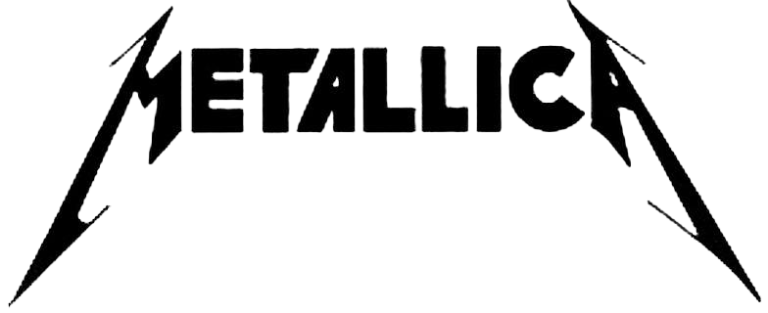A registered trademark gives your name legal protection. It makes it easier to stop others from using your name without permission, or who operate under a name that is too similar. Without registration, you risk having to change your name in the worst case scenario, because someone else secures the rights before you.
What is a trademark?
A trademark can be a name, a logo or another characteristic that distinguishes one entity from another. For artists and bands, the name is often the most important. It’s what the audience searches for, remembers, and associates with the music.
The band name can be registered as a trademark with the Norwegian Patent Office. When registering, you choose which goods and services the mark will cover. For bands and artists, this will typically include music files, clothing and concert performances.
A registered right gives exclusive rights to the name in the industry, reduces the risk of conflicts and strengthens the opportunities for growth and commercial exploitation.


If the band also has a strong visual symbol or logo, such as the Rolling Stones' famous tongue or the characteristic M and A letters in Metallica's logo, this can also be registered to ensure the visual identity.
Trademark and copyright – what's the difference?
Music is automatically protected by copyright. This happens at the moment it is created, without the need for registration. The name, on the other hand, is not protected in the same way. With a trademark registration, you gain control over the most important identity marker – the name that the public sees, remembers and associates with the music. Together, these rights give you control over both the content and the external identity.
Therefore, the band name should be registered as a trademark
A registered trademark makes it easier to stop copying and unauthorized use of the name – whether it happens on social media, on concert posters or when selling products.
But it's not just about stopping others from using it. Without registration, someone else could secure the rights first and, in the worst case, prevent you from using a name you have invested time and effort in.
With a registered right, you clearly demonstrate what you own and generally make yourself stronger in relation to both partners and competitors. It makes it easier to enter into commercial agreements, such as licensing of clothing and products, and provides better opportunities to build a brand that can grow in value over time. Think, for example, of the band T-shirts sold in stores like Carlings and H&M. These could not have been sold without agreements with those who own the rights to the name and logo.
Who should own the band name?
The band name can become a valuable asset. Therefore, band members should agree early on who owns it. The greater the success, the more difficult it becomes to raise the issue without causing unrest.
A simple and clear agreement can remove uncertainty and prevent future conflicts. The agreement should state who owns the name, and what happens to the rights if someone leaves or the band disbands. There are several possibilities. One solution is for the band name to be owned by one person, for example if in practice there is one person running the project. Another is for the name to be owned by the band as a whole, so that those who leave also give up the right to the name. There is complete freedom of agreement – the most important thing is that you agree and get it in writing.
What does it take to register a trademark?
When you apply for trademark registration, you must state what you want to protect – for example, your band name – and what goods and services it will cover. For artists, this will typically include music files, clothing and concert performances.
In particular, two main requirements must be met:
1. Distinctiveness – The mark must be capable of distinguishing one operator from another, and cannot be descriptive. For example, you cannot register JAZZ MUSIC for concert activities. Others may need to use the words JAZZ MUSIC, and you cannot obtain exclusive rights to this.
2. Not likely to be confused – The mark must not be likely to be confused with a similar registered mark for similar goods or services. For example, you are unlikely to register KVELERTAKT for concert performances, because it could create a risk of confusion with KVELERTAK , which is already registered for such services.
Before you apply, we recommend using our search service to check if the name is similar to something that has already been registered as a trademark. You can also use Name Search to do a joint search in the trademark register, the Brønnøysund Register of Entities and the domain name register – to see if something similar has been taken as a trademark, company name or domain.
It's easy to apply yourself at patentstyret.no. There you will find both guidance and tools to help you get started.
Registering a trademark in Norway costs from 3,800 kroner. The right lasts for 10 years, and can be renewed as long as you wish. If you have any questions along the way, you can contact the Norwegian Industrial Property Office's customer center.
If you want your music to go out into the world, it's not enough to just register it in Norway.
A trademark registration in Norway only gives exclusive rights here at home. Other countries have their own offices. If you want to invest in Germany, you can apply through the EU trademark authority, EUIPO . In the USA, the trademark authority is the USPTO .
Before such an initiative, it should be clear what to expect. The name may already be registered in one of the markets, and in that case, it is advantageous to discover this early. This gives room to adapt, find alternatives or enter into agreements with those who own the rights.
In summary: Don't wait to secure the name
The name is often the audience's first encounter with an artist - and the common denominator for everything that is shown, played and shared. A well-protected name provides security, growth opportunities and control over the brand. Without this, a career can be slowed by unnecessary conflicts, forced name changes and lost opportunities.
Register the trademark, clarify the rights internally, and you will then be better prepared for the future.



